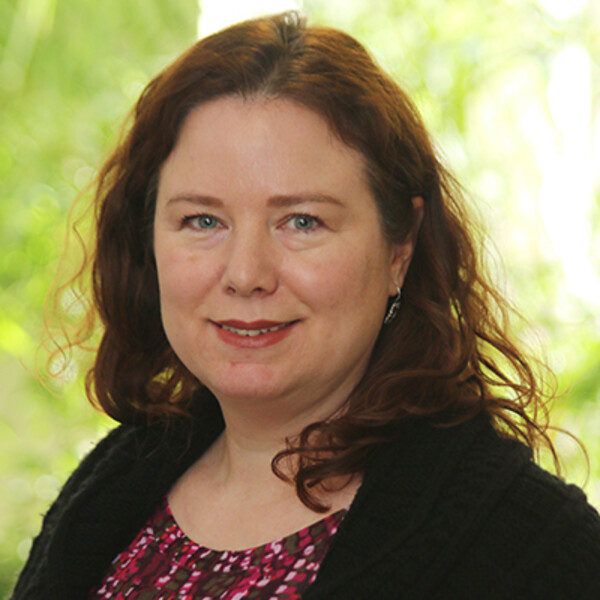Jennifer Mitchell
PhD

Dr Mitchell is an associate professor at the University of Toronto where she uses CRISPR genome engineering to study the mechanisms through which transcriptional regulatory elements activate gene expression in stem cells.
Dr Mitchell received her PhD from the University of Toronto and conducted her research on transcription factors regulating gene expression in the uterus during pregnancy at The Lunenfeld-Tanenbaum Research Institute with Dr Stephen Lye.
Dr Mitchell then pursued Postdoctoral training at the Babraham Institute in Cambridge UK where she worked with Peter Fraser to investigate how genome organization regulates transcription in erythroid cells.
Dr Mitchell started her own research group at the University of Toronto in 2009 where she investigates transcriptional mechanisms regulating pluripotency and lineage commitment during development.
Research Synopsis
Research in my laboratory studies how stem cells maintain the ability to self-renew and differentiate to specialised cells.
Our focus is on finding the on/off instructions in DNA that regulate genes required for stem cell function.
How does our genome regulate the process of development and cell-type specialisation?
Specific genes are expressed at discrete times due to the activation or repression of DNA regulatory regions.
Our research investigates how the genome functions in stem cells to regulate self-renewal and differentiation.
We often think about transcription as occurring on a particular gene in a linear manner whereas the nucleus is a three dimension organelle into which the genome is folded and organised. Within this folded structure DNA regulatory sequences physically contact the genes they regulate forming tissue-specific chromatin loops.
We use CRISPR Genome Editing, Molecular Biology and Cellular Imaging techniques combined with Genome-Wide Sequencing approaches and Bioinformatics analysis to investigate the mechanisms that underlie tissue-specific regulation of gene expression and genome folding.
Our previous work has identified the enhancers that activate numerous genes in stem cells including a distal enhancer of the Sox2 transcription factor which is required to maintain the stem cell state.
The work we do provides a deeper understanding of how our DNA makes us unique and predisposes us to particular diseases.
Our work also identifies new ways to consider treating genetic diseases with CRISPR Genome or Epigenome Editing.
Selected Publications
Singh G, Mullany S, Moorthy SD, Zhang R, Mehdi T, Tian R, Duncan AG, Moses AM, Mitchell JA. A flexible repertoire of transcription factor binding sites and a diversity threshold determines enhancer activity in embryonic stem cells. 2021, Genome Research, 10.1101/gr.272468.120
Khader N, Shchuka VM, Shynlova O, Mitchell JA. Transcriptional control of parturition: insights from gene regulation studies in the myometrium. 2021, Molecular Human Reproduction, 10.1093/molehr/gaab024
Tobias IC, Abatti LE, Moorthy SD, Mullany S, Taylor T, Khader N, Filice MA, Mitchell JA. Transcriptional enhancers: from prediction to functional assessment on a genome-wide scale. 2020, Genome, 10.1139/gen-2020-0104
Liang M, Soomro AU, Tasneem S, Abatti LE, Alizada A, Yuan X, Uusküla-Reimand L, Antounians L, Alvi SA, Paterson AD, Rivard GE, Scott IC, Mitchell JA, Hayward CPM, Wilson MD Enhancer-gene rewiring in the pathogenesis of Quebec Platelet Disorder. Blood blood.2020005394. doi: https://doi.org/10.1182/blood.2020005394
Shchuka VM, Abatti LE, Hou H, Khader N, Dorogin A, Wilson MD, Shynlova O, Mitchell JA. The pregnant myometrium is epigenetically activated at contractility-driving gene loci prior to the onset of labor in mice. PLoS Biol 18(7): e3000710. https://doi.org/10.1371/journal.pbio.3000710
Dhaliwal NK, Abatti L, Mitchell JA KLF4 protein stability regulated by interaction with pluripotency transcription factors overrides transcriptional control Genes Dev, 2019;33(1): 1-14
TF Mehdi, G Singh, JA Mitchell, AM Moses. Variational infinite heterogeneous mixture model for semi-supervised clustering of heart enhancers. Bioinformatics 35 (18), 3232-3239
Dhaliwal NK, Miri K, Davidson S, El Jarkass HT, Mitchell JA KLF4 Nuclear Export Requires ERK Activation and Initiates Exit from Naive Pluripotency Stem Cell Reports 2018;10(4): 1308-1323
Moorthy SD, Davidson S, Shchuka VM, Singh G, Malek-Gilani N, Langroudi L, Martchenko A, So V, Macpherson NN and Mitchell JA. Enhancers and super-enhancers have an equivalent regulatory role in embryonic stem cells through regulation of single or multiple genes. Genome Res. 2017;27: 246-258.
VM Shchuka, N Malek-Gilani, G Singh, L Langroudi, NK Dhaliwal, SD Moorthy, S Davidson, NN Macpherson and JA Mitchell. Chromatin Dynamics in Lineage Commitment and Cellular Reprogramming. Genes 2015, 6(3), 641-661.
S Schoenfelder, M Furlan-Magaril, B Mifsud, F Tavares-Cadete, R Sugar, BM Javierre, T Nagano, Y Katsman, M Sakthidevi, SW Wingett, E Dimitrova, A Dimond, LB Edelman, S Elderkin, K Tabbada, E Darbo, S Andrews, Herman B, A Higgs, E LeProust, CS Osborne, JA Mitchell, NM Luscombe and P Fraser. The pluripotent regulatory circuitry connecting promoters to their long-range interacting elements. Genome Res. April 2015 25: 582-597.
HY Zhou, Y Katsman, NK Dhaliwal, S Davidson, NN Macpherson, M Sakthidevi, F Collura,and JA Mitchell A Sox2 distal enhancer cluster regulates embryonic stem cell differentiation potential. Genes Dev. 2014, 28 (24): 2699-2711.
